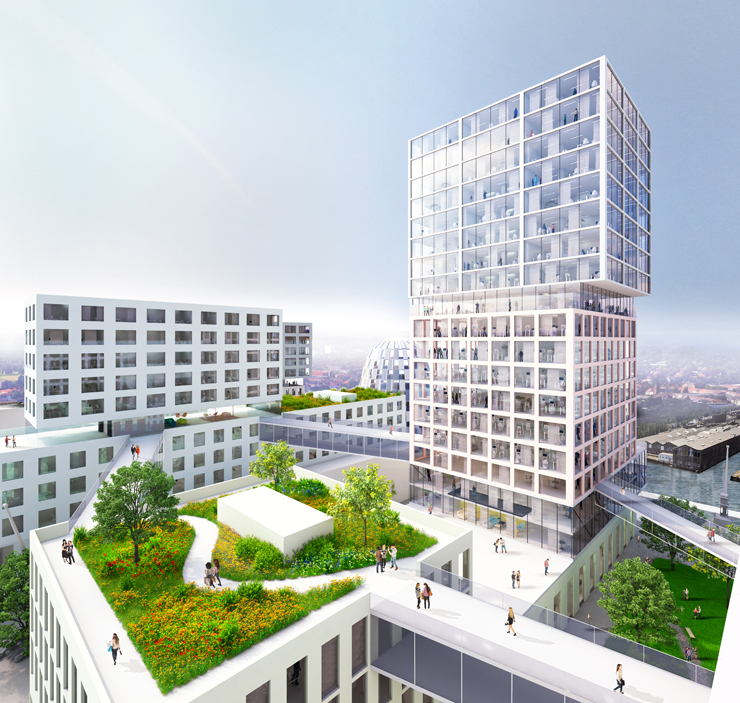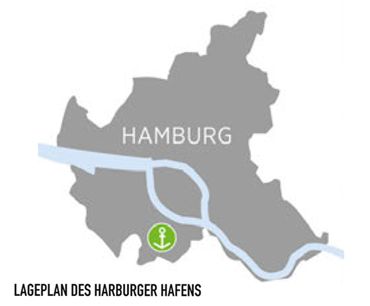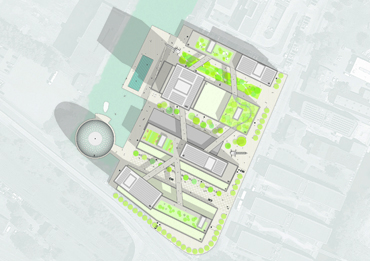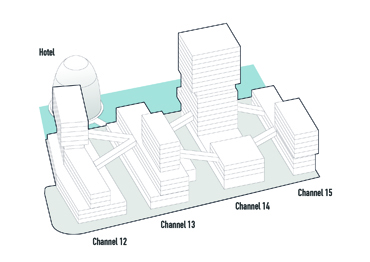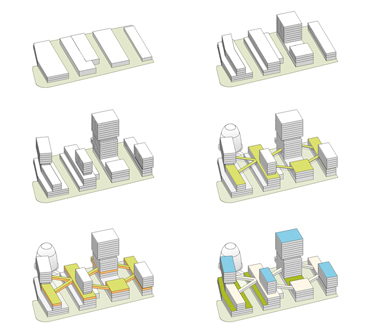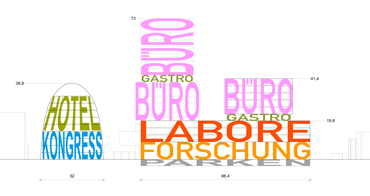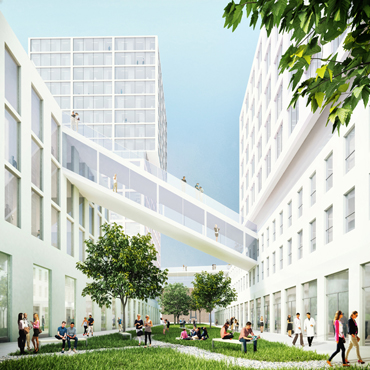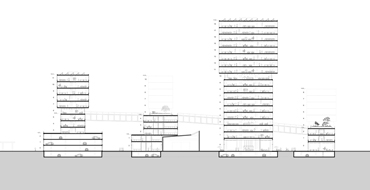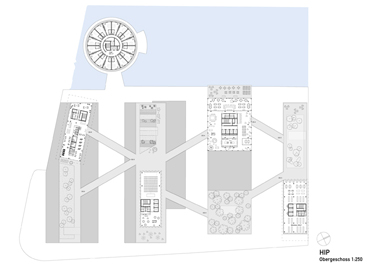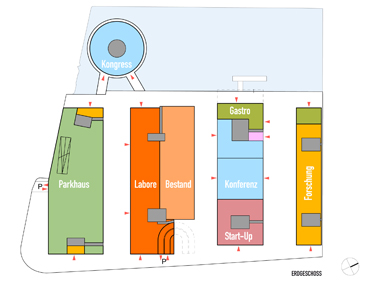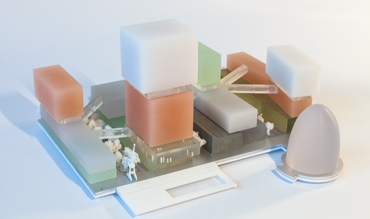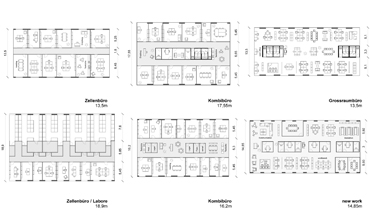morePlatz
architecture / urbanism / art / office / publications / contact deutsch
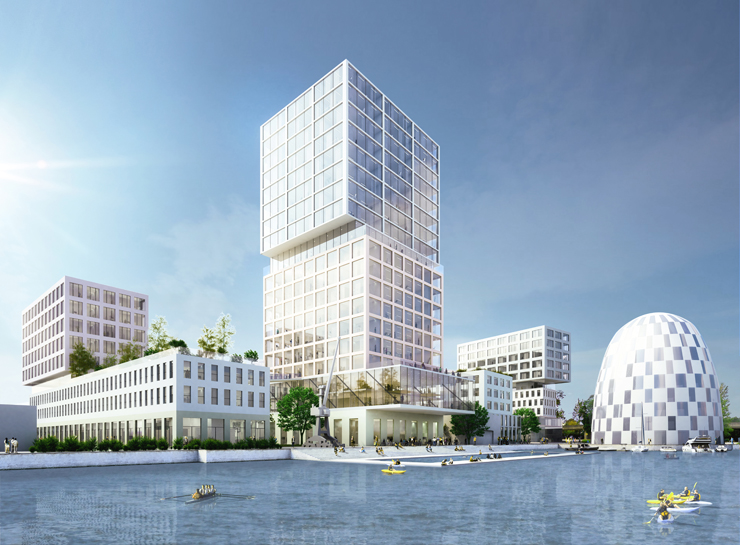
|
Since 25 years, the Harburg harbors are constantly converted and renewed which results into an vivid area full of architectural and programmatic variety. The project of the Hamburg Innovation Port, HIP - with its superb location at the Ziegelwiesenkanal - benefits from this strategy. Being part of ‚Channel Hamburg' - HIP offers a wide range of programs for innovation and technology, which makes it another important steppingstone in the development of the district Harburg. Port typologies as reference |
The location of the HIP in such a port area offers a very characteristic atmosphere and a clear address for the project both from the city and the water side.
|
|
|
|
Concept Campus - organization They are composed of three different stacked volumes, according to the basic concept: base - middle - head. In addition, the buildings are connected by bridges, which enables a potentially new and innovative programming. |
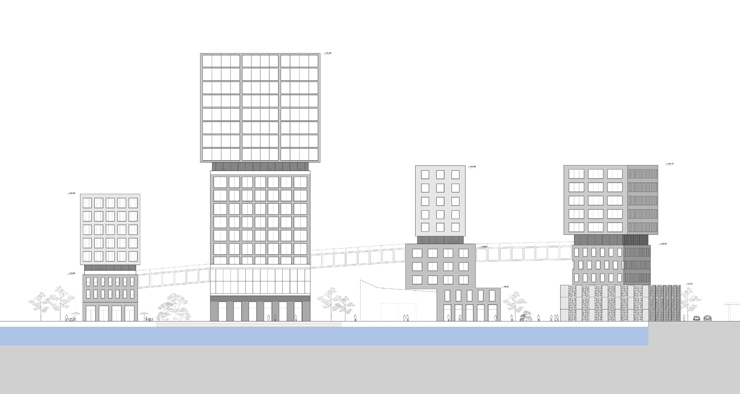
- The base consists of very deep building volumes with a large floor height, referring to the typical harbor warehouses. Programs with large spacial requirements, such as research facilities, congress hals or an auditorium are located here. The base provides spacious entrance areas that lead to the different functions and access to the cores. In the basement of each strip, a parking is foreseen - its 8,10m grid defines a consistent structure for all upper buildings. - The ‚middle' is formed by an elongated slab that is centered above the base and which extends four storey's up to the given heights of the masterplan. According to each respective requirement, the middle knows a variety of standard building depth for offices, laboratories, or combined layouts and is flexibly divisible. The roofs of the middle layer are accessible for the tenants, offer special programs and are topped with extensive greenery.
|
|
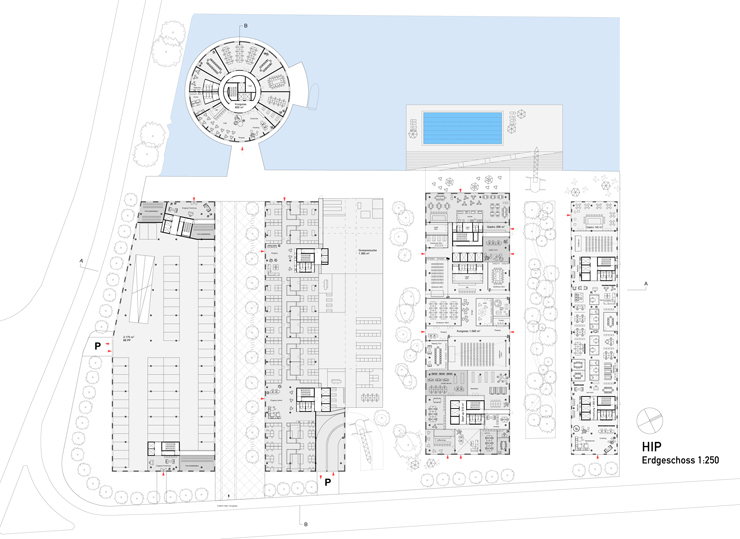
- The ‚heads': compact additional volumes are placed on top of the middle slabs. They are arranged in staggered rhythm, in order to obtain a maximum sculptural openness and to achieve the best views for each of the heads. The ‚heads' are offset by a special floor. Its structure allows a varying building depth. In the ‚offset' floor a special program is proposed for collective benefits, such as a library, a lecture hall, fitness facilities or a canteen. - The bridges: they combine the buildings of 'channel 12-15' on the roof level of the middle layer, thus providing a continuous free space for users and guests of the HIP.
|
|
|
|
- The bridges: they combine the buildings of 'channel 12-15' on the roof level of the middle layer, thus providing a continuous free space for users and guests of the HIP. At the end of the Ziegelwiesenkanal an independent solitary structure with hotel and convention functions, appears as a floating object in the water.
|
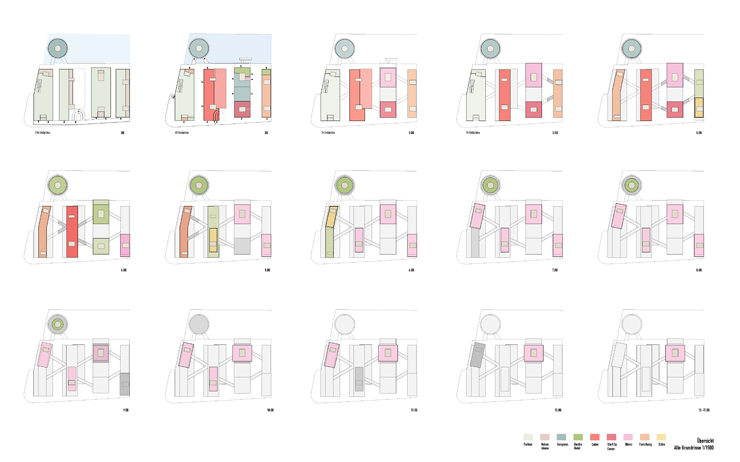
Moreover, this spatial-functional aspect of flexibility is enhanced by a range of different qualities for different user groups. For example, large-scale ‚working lofts' or workshops in the base, and in the same building - a few floors higher - high-end and HiTech offices... Ideally, this results in a vertical neighborhood of different usages for all buildings and all phases, which promotes the innovative character of the facilities. The project name 'Stacked Campus' is derived from this particular arrangement - the networking of different types of buildings and programs.
|
|
|
|
Ultimately, the buildings ‚channel 12-15' are variations of this basic concept: - Channel 13: here the base is built around the existing machine hall of H. C. Hagemann, which includes the possibility to continue the usage of the hall and to decide in a later phase on its integration or deconstruction. The hall is thus optionally being integrated into the construction. This results in a completely distinct layout of the ground floor and a special potential for space-intensive research functions, for example with delivery access to the channel. |
- Channel 14: the high-rise is located in this strip close to the banks of the canal. It is proposed on an economically sensible footprint and consists of stacked volumes. The base of channel 14 houses the congress center and is therefore extra high, while the complex is completed by a compact cube at the road side. The middle layer with a double high restaurant and a roof terrace towards the water is cantilevering over the bank side.
|
|

phasing
|
|
|
|
Location: Blohmstraße, Hamburg Harburg, Germany renderings © MVRDV |
